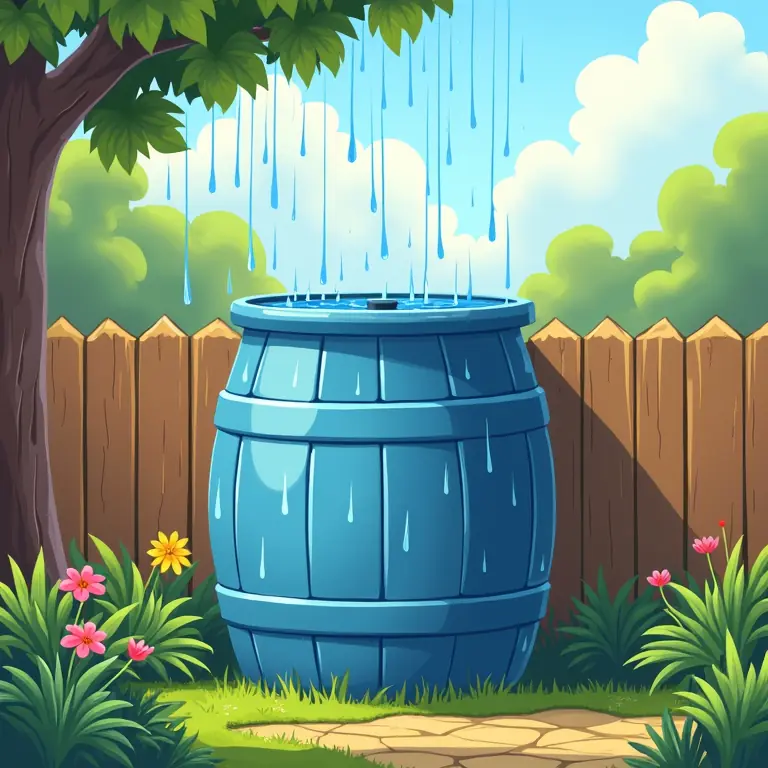Build Your Own Rain Barrel: A Friendly Guide to Water Conservation
Water. It’s essential for life, yet often taken for granted. In many regions, water scarcity is a growing concern, and even where water seems plentiful, conserving it is a responsible and beneficial practice. One incredibly effective, and surprisingly easy, way to contribute to water conservation is by building and using a rain barrel. This guide will walk you through everything you need to know, from the benefits of rainwater harvesting to a step-by-step construction process, and even maintenance tips to keep your rain barrel functioning optimally for years to come. Let’s dive in!
Why Harvest Rainwater? The Benefits Are Numerous!
Before we get to the ‘how,’ let’s explore the ‘why.’ Why bother collecting rainwater? The reasons are compelling:
- Reduced Water Bills: This is the most immediate and noticeable benefit. Using rainwater for irrigation means less reliance on municipal water, leading to lower bills.
- Environmentally Friendly: Rainwater harvesting reduces the strain on local water supplies, conserving this precious resource. It also reduces stormwater runoff, which can carry pollutants into rivers and lakes.
- Better for Plants: Rainwater is naturally soft, free of chlorine and other chemicals found in treated water. Plants thrive on it! The slightly acidic pH is also beneficial for many garden plants.
- Self-Sufficiency: In times of drought or water restrictions, having a rain barrel provides a reliable water source for essential needs like watering gardens and washing cars.
- Educational Opportunity: Building and maintaining a rain barrel is a fantastic learning experience for all ages, especially children, fostering an appreciation for environmental stewardship. Check out this video for some other great water saving tips:
Planning Your Rain Barrel System
Okay, you’re convinced! Now let’s start planning. Here’s what you need to consider:
1. Location, Location, Location!
Where will you place your rain barrel? Ideally, you want it:
- Under a Downspout: This is the most efficient way to collect rainwater.
- On a Level Surface: Essential for stability and proper operation.
- Close to Your Garden or Watering Area: Minimizes the distance you need to carry water or run a hose.
- Away from Obstructions: Ensure easy access for maintenance and cleaning.
2. Barrel Size and Material
Rain barrels come in various sizes, typically ranging from 50 to 100 gallons. The size you choose depends on your rainfall patterns, garden size, and water usage. Consider:
- 50-Gallon Barrel: Suitable for small gardens or occasional use.
- 75-Gallon Barrel: A good all-around size for most households.
- 100-Gallon Barrel: Ideal for larger gardens or high water demand.
Common materials include:
- Plastic: The most affordable and readily available option. Look for food-grade plastic barrels to ensure they are safe for collecting water.
- Wood: More aesthetically pleasing but requires more maintenance to prevent rot.
- Metal: Durable but can rust if not properly treated.
3. Essential Components
Beyond the barrel itself, you’ll need a few key components:
- Downspout Diverter: This redirects rainwater from your downspout into the barrel. There are various types available, from simple manual diverters to more sophisticated automatic ones.
- Spigot: Allows you to easily access the stored water.
- Overflow Hose: Directs excess water away from the barrel when it’s full, preventing flooding.
- Screen/Mesh: Placed at the top of the barrel to prevent leaves, debris, and mosquitoes from entering.
- Connectors and Fittings: To connect the downspout diverter, spigot, and overflow hose to the barrel.
Step-by-Step Rain Barrel Construction
Now for the fun part – building your rain barrel! This guide will focus on a simple plastic barrel construction. Always prioritize safety and wear appropriate protective gear (gloves, safety glasses).
Step 1: Preparing the Barrel
- Clean the Barrel: Thoroughly wash the inside of the barrel with soap and water to remove any residue. Rinse well.
- Drill Holes: Using a drill with a hole saw bit (size will depend on your spigot and overflow hose fittings), drill holes for the spigot and overflow hose near the bottom of the barrel. The spigot hole should be slightly higher than the overflow hole to maximize water storage.
Step 2: Installing the Spigot
- Apply Teflon Tape: Wrap the threads of the spigot with Teflon tape to create a watertight seal.
- Insert the Spigot: Carefully insert the spigot into the drilled hole and tighten the nut securely.
Step 3: Installing the Overflow Hose
- Attach the Fitting: Attach a suitable fitting to the overflow hose.
- Insert the Fitting: Insert the fitting into the drilled hole and secure it tightly.
- Connect the Hose: Connect the overflow hose to the fitting and direct it away from your house foundation.
Step 4: Installing the Downspout Diverter
- Cut the Downspout: Cut a section of your downspout where you want to install the diverter.
- Install the Diverter: Follow the manufacturer’s instructions to install the downspout diverter. Ensure it’s securely attached and properly aligned to direct water into the barrel.
Step 5: Adding the Screen
- Cut Screen to Size: Cut a piece of screen or mesh slightly larger than the opening of the barrel.
- Secure the Screen: Secure the screen over the opening of the barrel using a bungee cord or other suitable method. This prevents debris and mosquitoes from entering.
Maintaining Your Rain Barrel
Congratulations! You’ve built your rain barrel. But the work doesn’t stop there. Regular maintenance is crucial to ensure its longevity and effectiveness.
- Regular Cleaning: Clean the barrel at least twice a year, removing any accumulated sediment or debris.
- Screen Maintenance: Inspect and clean the screen regularly, removing leaves and other debris.
- Winterizing: In freezing climates, disconnect the downspout diverter and drain the barrel completely to prevent damage from ice expansion.
- Spigot Check: Periodically check the spigot for leaks and tighten as needed.
- Overflow Hose Check: Ensure the overflow hose remains clear and directs water away from your foundation.
Troubleshooting Common Issues
Even with careful construction and maintenance, you might encounter some issues. Here are a few common problems and solutions:
- Barrel Doesn’t Fill: Check the downspout diverter to ensure it’s properly diverting water. Also, verify that the screen isn’t clogged.
- Water Leaks from Spigot: Tighten the spigot nut or replace the Teflon tape.
- Overflow Hose Clogs: Clear any obstructions from the overflow hose.
- Mosquitoes Breeding in Barrel: Ensure the screen is securely in place and doesn’t have any holes. You can also add a mosquito dunk (a biological larvicide) to the barrel.
Beyond the Basics: Expanding Your System
Once you’ve mastered the basics, you can explore more advanced rainwater harvesting techniques:
- Multiple Barrels: Connect multiple barrels together to increase your storage capacity.
- First Flush Diverter: This device diverts the initial runoff, which contains the most pollutants, away from the barrel.
- Rain Garden: Direct overflow water into a rain garden, a landscaped area designed to absorb stormwater runoff.
- Whole-House Rainwater Harvesting System: A more complex system that filters and purifies rainwater for use inside the home.
Resources and Further Learning
Want to learn more about water conservation and rainwater harvesting? Here are some helpful resources:
- Local Conservation Organizations: Many communities have organizations dedicated to water conservation.
- University Extension Services: Provide valuable information and resources on rainwater harvesting.
- Online Forums and Communities: Connect with other rainwater harvesting enthusiasts and share tips and advice.
Water conservation is a collective responsibility. By building and using a rain barrel, you’re not only saving money but also making a positive impact on the environment. It’s a rewarding project that benefits both you and the planet. If you’re looking for another satisfying DIY project, consider restoring an old clock! It’s a wonderful way to combine craftsmanship with a touch of history. You can find a friendly guide to clock restoration here. And if you want to enhance your communication skills, check out our guide to slide design here. Or perhaps you’d like to explore your creative side through music? We’ve got a friendly guide to basic music production here.
So, gather your materials, roll up your sleeves, and start building your own rain barrel today! You’ll be amazed at how easy and beneficial it can be.


Discussion about this post